Unusual maintenance of X chromosome inactivation predisposes female lymphocytes for increased expression from the inactive X
- PMID: 27001848
- PMCID: PMC4833277
- DOI: 10.1073/pnas.1520113113
Unusual maintenance of X chromosome inactivation predisposes female lymphocytes for increased expression from the inactive X
Abstract
Females have a greater immunological advantage than men, yet they are more prone to autoimmune disorders. The basis for this sex bias lies in the X chromosome, which contains many immunity-related genes. Female mammals use X chromosome inactivation (XCI) to generate a transcriptionally silent inactive X chromosome (Xi) enriched with heterochromatic modifications and XIST/Xist RNA, which equalizes gene expression between the sexes. Here, we examine the maintenance of XCI in lymphocytes from females in mice and humans. Strikingly, we find that mature naïve T and B cells have dispersed patterns of XIST/Xist RNA, and they lack the typical heterochromatic modifications of the Xi. In vitro activation of lymphocytes triggers the return of XIST/Xist RNA transcripts and some chromatin marks (H3K27me3, ubiquitin-H2A) to the Xi. Single-cell RNA FISH analysis of female T cells revealed that the X-linked immunity genes CD40LG and CXCR3 are biallelically expressed in some cells. Using knockout and knockdown approaches, we find that Xist RNA-binding proteins, YY1 and hnRNPU, are critical for recruitment of XIST/Xist RNA back to the Xi. Furthermore, we examined B cells from patients with systemic lupus erythematosus, an autoimmune disorder with a strong female bias, and observed different XIST RNA localization patterns, evidence of biallelic expression of immunity-related genes, and increased transcription of these genes. We propose that the Xi in female lymphocytes is predisposed to become partially reactivated and to overexpress immunity-related genes, providing the first mechanistic evidence to our knowledge for the enhanced immunity of females and their increased susceptibility for autoimmunity.
Keywords: X chromosome inactivation; XIST RNA; epigenetics; female-biased autoimmunity.
Conflict of interest statement
The authors declare no conflict of interest.
Figures
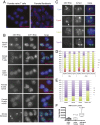
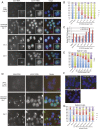
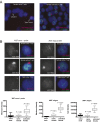
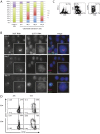
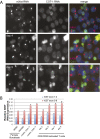
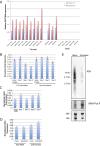
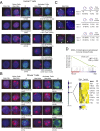
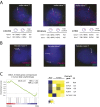
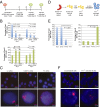
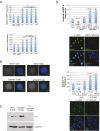

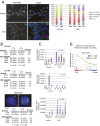
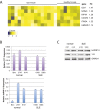
Similar articles
-
Female-bias in systemic lupus erythematosus: How much is the X chromosome to blame?Biol Sex Differ. 2024 Oct 7;15(1):76. doi: 10.1186/s13293-024-00650-y. Biol Sex Differ. 2024. PMID: 39375734 Free PMC article. Review.
-
Altered X-chromosome inactivation in T cells may promote sex-biased autoimmune diseases.JCI Insight. 2019 Apr 4;4(7):e126751. doi: 10.1172/jci.insight.126751. eCollection 2019 Apr 4. JCI Insight. 2019. PMID: 30944248 Free PMC article.
-
Loss of Xist RNA from the inactive X during B cell development is restored in a dynamic YY1-dependent two-step process in activated B cells.PLoS Genet. 2017 Oct 9;13(10):e1007050. doi: 10.1371/journal.pgen.1007050. eCollection 2017 Oct. PLoS Genet. 2017. PMID: 28991910 Free PMC article.
-
The dynamic epigenetic regulation of the inactive X chromosome in healthy human B cells is dysregulated in lupus patients.Proc Natl Acad Sci U S A. 2021 Jun 15;118(24):e2024624118. doi: 10.1073/pnas.2024624118. Proc Natl Acad Sci U S A. 2021. PMID: 34103397 Free PMC article.
-
A lifelong duty: how Xist maintains the inactive X chromosome.Curr Opin Genet Dev. 2022 Aug;75:101927. doi: 10.1016/j.gde.2022.101927. Epub 2022 Jun 16. Curr Opin Genet Dev. 2022. PMID: 35717799 Free PMC article. Review.
Cited by
-
Multifaceted role of CTCF in X-chromosome inactivation.Chromosoma. 2024 Oct 21. doi: 10.1007/s00412-024-00826-w. Online ahead of print. Chromosoma. 2024. PMID: 39433641 Review.
-
Female-bias in systemic lupus erythematosus: How much is the X chromosome to blame?Biol Sex Differ. 2024 Oct 7;15(1):76. doi: 10.1186/s13293-024-00650-y. Biol Sex Differ. 2024. PMID: 39375734 Free PMC article. Review.
-
Sex difference in human diseases: mechanistic insights and clinical implications.Signal Transduct Target Ther. 2024 Sep 10;9(1):238. doi: 10.1038/s41392-024-01929-7. Signal Transduct Target Ther. 2024. PMID: 39256355 Free PMC article. Review.
-
Stable and robust Xi and Y transcriptomes drive cell-type-specific autosomal and Xa responses in vivo and in vitro in four human cell types.Cell Genom. 2024 Sep 11;4(9):100628. doi: 10.1016/j.xgen.2024.100628. Epub 2024 Aug 6. Cell Genom. 2024. PMID: 39111319 Free PMC article.
-
Quantification of escape from X chromosome inactivation with single-cell omics data reveals heterogeneity across cell types and tissues.Cell Genom. 2024 Aug 14;4(8):100625. doi: 10.1016/j.xgen.2024.100625. Epub 2024 Jul 30. Cell Genom. 2024. PMID: 39084228 Free PMC article.
References
-
- Migeon BR. The role of X inactivation and cellular mosaicism in women’s health and sex-specific diseases. JAMA. 2006;295(12):1428–1433. - PubMed
-
- Spolarics Z. The X-files of inflammation: Cellular mosaicism of X-linked polymorphic genes and the female advantage in the host response to injury and infection. Shock. 2007;27(6):597–604. - PubMed
-
- Butterworth M, McClellan B, Allansmith M. Influence of sex in immunoglobulin levels. Nature. 1967;214(5094):1224–1225. - PubMed
-
- Purtilo DT, Sullivan JL. Immunological bases for superior survival of females. Am J Dis Child. 1979;133(12):1251–1253. - PubMed
Publication types
MeSH terms
Substances
Grants and funding
LinkOut - more resources
Full Text Sources
Other Literature Sources
Molecular Biology Databases

